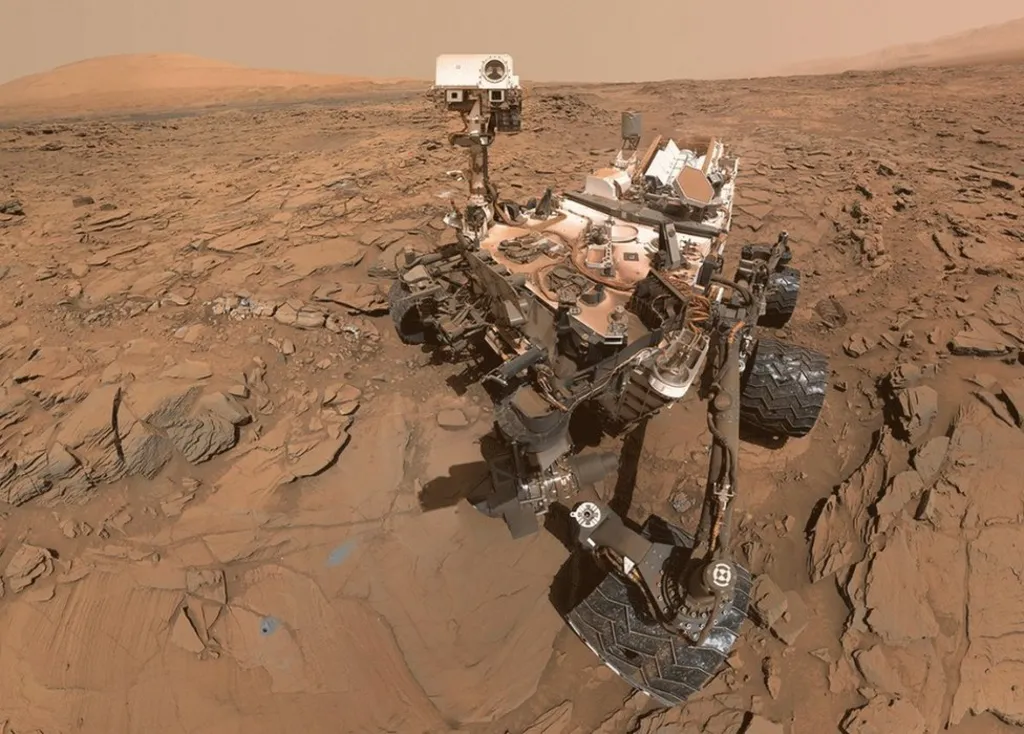Rio Tinto Ltd is embarking on a groundbreaking journey in the mining world. The company is pioneering the use of NASA’s LIBS technology, a cutting-edge innovation, to analyse mineral deposits and detect the presence of minerals, particularly Copper and Lithium.
LIBS, or laser-induced breakdown spectroscopy, was mainly used by American space organisation NASA’s breakthrough Mars rover Curiosity to analyse rocks on Mars. Rio Tinto personnel say they have been using the technology since 2019, in a strategic partnership with Lumo Analytics, a Finnish startup company that specializes in data analytics for the mining industry.
Data collection-analysis accelerated exponentially
Hitherto, analytical processes required teams of geologists to spend thousands of hours collecting data from rock samples and then carrying it to and from laboratories for results – a process said to take an average time delay of 75 days.
According to Rio, the LIBS technology is a game changer, capable of transforming the entire process. It can slash the time required for analysis from days to just over an hour, delivering results with unparalleled precision.
It is said to produce what the company calls a “fingerprint” of a mineral rock showing its various chemical components. The technology implements a high-powered pulsed laser-focused on analysing electromagnetic emissions from core samples.
“LIBS can detect even the lightest elements on the periodic table, including lithium, an element key in our energy transition,” said Dave Andrews, Rio Tinto’s head of exploration.
 NASA’s Curiosity rover on Mars took on May 12, 2019. (Image credit: NASA/JPL-Caltech/MSSS)
NASA’s Curiosity rover on Mars took on May 12, 2019. (Image credit: NASA/JPL-Caltech/MSSS)
If this technology comes to fruition, it could potentially give Rio Tinto a significant edge in the market, especially as the global demand for Lithium is on the rise.
Taking advantage of the rising Copper Age
Copper demand is rising globally due to widespread interest in AI, which essentially calls for more data centres worldwide and, consequently, more copper.
Copper is trading at US$9,458 per tonne, showing an 11% growth.
The company announced it would be stepping up mining in its Oyu Tolgoi mine in Mongolia, which they claim will decrease unit costs.
The firm’s new undertakings, which include a significant investment of $US250 million this year for new series, more than 50 per cent of which will be for copper exploration, are expected to boost the company’s revenue. The firm anticipates that more than 13% of this year’s revenue will come from copper, a significant increase that can be attributed to the use of LIBS technology.
When iron and steel prices are declining due to the property market slump in China, the turning to Copper and Aluminum has given Rio a significant bolster.
The company’s shares have been on the uptrend for the past year, with a significant increase of 9.60% compared to this time last year. This increase is a clear indication of the market’s positive response to Rio Tinto’s initiatives, including its use of LIBS technology and its strategic focus on copper and lithium exploration.
The introduction of the new drilling and exploration technique may also lead the company to discover new Copper and Lithium mines. However, it’s important to note that the technology is still relatively new and may have its own set of challenges, such as the need for specialized training and potential limitations in certain geological conditions.
Rio has 26 projects in copper, 14 in lithium, and seven in nickel.
LIBS – a “game changer.”
Rio chief scientist Nigel Stewart and head of exploration Dave Andrews were both seen labelling the LIBS technology a “game changer.”
The Rio personnel say that LIBS technology, with its ramped-up speed in data collection and analysis, can also potentially help estimate rocks’ carbon capture potential. This is a significant environmental benefit, as it can aid in identifying rocks that have a high capacity for carbon capture, contributing to the company’s sustainability efforts.
Also, the machine-led analysis is said to eliminate any chance of error or partiality that can creep in when conducted by a team of geologists.
“Everyone calls that same rock (core samples) a different name,” Mr Andrews added, whereas the LIBS scanning system took about 2000 readings a second with data on all elements in a sample.
This is said to require a massive volume of data and, at the same time, ‘impartial’ data collection.
Rio Tinto is also a major player in lithium exploration in Africa, a region rich in lithium resources. The company has an agreement with Rwanda, a country with significant lithium deposits, to explore and develop these resources. This strategic partnership further strengthens Rio Tinto’s position in the global lithium market.











